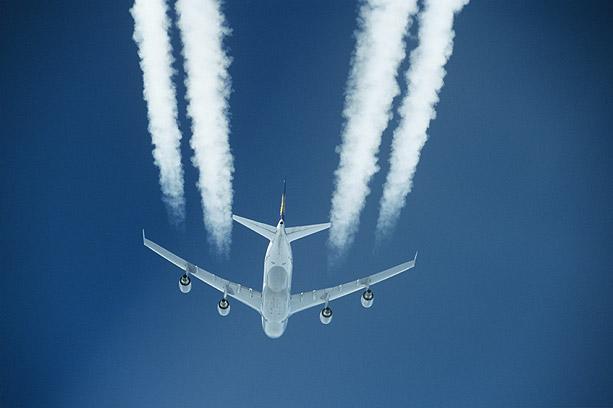European Union has been struggling to solve continuously deepening so-called “Euro-zone” debt crisis for months.
All other countries locked to the long awaiting result of the summit of the European leaders including United States where the global financial economic crisis took the first shot with sub-prime credit crunch in August 2007.
While whole world braced for the possible impact of the Euro-zone crisis, there is another topic of conflict glooming over the relations between European Union and the rest of the world.
European Union Emission Trading System (EU ETS)
EU ETS launched in 2005 is the first emission trading system in the world in terms of its wide scope. The EU ETS is the cornerstone of the EU’s strategy for fighting climate change.
It is the first international trading system for CO2 emissions in the world and beside 27 EU Member States also the other three members of the European Economic Area – Norway, Iceland and Liechtenstein take part in EU ETS. It currently covers over 10,000 installations in the energy and industrial sectors which are collectively responsible for close to half of the EU’s emissions of CO2 and 40% of its total greenhouse gas emissions.[1]
Under the EU ETS, large emitters of carbon dioxide within the EU must monitor their CO2 emissions, and annually report them, as they are obliged every year to return an amount of emission allowances to the government that is equivalent to their CO2 emissions in that year.
Beginning with 2012, EU ETS will also be applicable for airlines industry. The calculation of the system is based on 97% of the aviation industry’s 2004-6 emissions and divided up between carriers according to amount of pollution caused in 2010. Airlines would get 85% of permits free, with the remaining 15% auctioned.
And this is the root cause of the ongoing debate between EU and the rest of the world.
Although the intention of the EU ETS is very positive such as spending the fee collected for the environmental issues, the conditions and the calculation of the emission fee for the airline companies are highly controversial.
Let’s give an example in order to clarify the intended calculation of EU ETS fees for airlines.
According to the Great Circle Mapper, total air distance between New Delhi and Frankfurt airports is 3812 miles. And almost 3000 miles of it lies outside the European air space.
But according to the EU ETS rules, the emission fee for an airline operating between New Delhi and Frankfurt will be calculated over the whole distance; here 3812 miles.
This is where the big players such as United States, China, Russia and India weigh in.
While relevant authorities of the EU continuously claim the legality of the ETS by saying “the inclusion in the EU emissions trading scheme of flights of all airlines from and to European airports is compatible with the principle of fair and equal opportunity laid down in the Open Skies Agreement”[2], in United States a legislation introduced to ban U.S. air carriers from participating in the Emissions Trading Scheme that would tax U.S. airlines flying into and out of the European Union. Bipartisan House Transportation Committee leaders see EU ETS as “unjust” and “a clear violation of international law that puts U.S. air carriers at a competitive disadvantage, kills U.S. aviation jobs, and may lead to a trade war.” [3]
China has already deferred an Airbus A380 order of Hong Kong Airlines in June by way of retaliation against EU and Russia proposed strategic allocation of high-value slots at European and Russian airports in order to avoid increasing carbon emissions instead of imposing ETS.[4]
On the other hand, leading international institutions of aviation industry also have positioned themselves against EU’s ETS.
In September, International Air Transport Association (IATA) bluntly called EU for abandoning the ETS while alleging it as “misguided”.[5] Tony Tyler, IATA’s Director General and CEO, emphasized that IATA is not against emission trading system. But the EU’s unilateral and regional approach to ETS could harm the initiatives taken by ICAO aiming to reach a real solution under a global approach.
Association of European Airlines (AEA) also warned EU. Ulrich Schulte-Strathaus, Secretary General AEA, said at a conference that “if the EU persists in an approach which some have called imperialist, the question is posed as to how they will ensure compliance” and added that “The EU faces a serious risk of some sort of retaliation.”[6]
And finally, an international meeting between International Civil Aviation Organization (ICAO) Council and other non-EU Member States[7] was held in New Delhi on 29th-30th September to discuss the inclusion of aviation in the European Union Emission Trading System (EU-ETS).
After the meeting a joint declaration was published. The declaration opposed the EU’s ETS plan, which claimed to be inconsistent with applicable international law and called upon to urge the EU and its Member States to refrain from including flights by non-EU carriers in its ETS. It also called to urge the EU and its Member States to work collaboratively with the rest of the international community to address aviation emissions.
Only two months remaining for the official beginning date of EU ETS and there is still a big uncertainty about application of that plan in real world. It is obvious that the plan will be a great headache and controversy for international community in the shadow of the EU’s current economic troubles since the use of the carbon emission fee collected is very blurred.
[1] http://europa.eu/rapid/pressReleasesAction.do?reference=MEMO/08/35&format=HTML&aged=0&language=EN&guiLanguage=en
[4] http://atwonline.com/eco-aviation/news/russia-proposes-airport-slots-co2-reduction-incentive-1014
[7] Participating countries: Argentine Republic, Brazil, Canada, China, Chile, Colombia, Cuba, Egypt, Japan, Republic of Korea, Malaysia, Mexico, Nigeria, Paraguay, Peru, Philippines, Qatar, Russian Federation, Saudi Arabia, Singapore, South Africa, Thailand, Turkey, United Arab Emirates and United States of America

